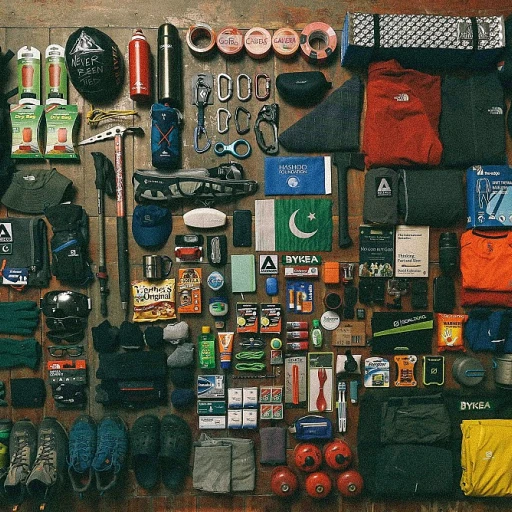Understanding the Needs of Senior Hikers
Recognizing the Unique Requirements of Older Adventurers
When it comes to enjoying the great outdoors, senior hikers face distinct challenges, making it important to understand their specific hiking needs. While the joy of exploring nature remains timeless, physical changes such as reduced strength, balance, and agility require adjustments in hiking gear, especially walking aids like walking poles.
Older hikers often benefit from added stability and support, which is where walking poles come into play. These versatile tools can reduce the stress on joints, particularly in the knees, as you tackle various terrains. The right poles can provide balance during creek crossings or steep descents, ensuring every step on the trail is safe and enjoyable.
Furthermore, considerations such as the weight, length, and grip of the poles are paramount. Opting for lightweight materials like carbon fiber or aluminum can ease the trekking experience without compromising on durability. A focus on adjustable length options allows for adaptability to different terrains, and a reliable grip, whether foam or cork, ensures comfort and reduces strain over time.
Incorporating walking poles into your hiking routine not only enhances physical stability but empowers senior hikers to extend their outdoor adventures. To make the most of your trekking pole investment, it's worth exploring the offerings of renowned brands that design with diverse user needs in mind, including black diamond and leki models, tailored for mountain treks and leisurely trails alike.
Key Features to Look for in Walking Poles
Critical Elements in Trekking Pole Design
When selecting hiking poles, it’s essential to consider various features that cater to senior hikers' specific needs. Understanding these components can significantly enhance the hiking experience by providing comfort, stability, and support.
Material Matters
The shaft material is a vital factor. Choosing between carbon fiber and aluminum depends on your priorities. Carbon fiber poles, such as the alpine carbon options, are lightweight and offer a greater weight reduction. They are excellent for longer trails. Meanwhile, aluminum poles, like the diamond pursuit, are robust and can absorb impact effectively.
Grip and Comfort
The grip material significantly affects the comfort level. Opt for cork grips or foam grips depending on your preference for moisture absorption or softness. Cork grips, often found in cressida carbon poles, adapt to your hand's shape over time, providing a customized feel.
Ease of Adjustability
Ease of adjustments is crucial for senior hikers. Lever locks systems are renowned for their quick and efficient length adjustments. Ensure the poles you choose allow for simple collapsed length variations, which can be especially beneficial when traversing unpredictable terrains.
Balancing Weight and Durability
Poles need to strike the right balance between weight and durability. While black diamond and leki poles typically offer the best of both worlds, cascade mountain tech poles provide high durability at a competitive price. It’s imperative to prioritize weight and construction quality to ensure a safe hiking experience.
For an in-depth look at how these elements come together in practice, exploring the methods of using natural resources in hiking gear, such as in our guide on the perfect outdoor companion, provides further valuable insights.
Comparing Top Walking Pole Brands
Evaluating Leading Walking Pole Brands
When venturing into the world of walking and trekking poles, it’s beneficial to narrow down the options by focusing on the reliable and popular brands in this space. Experienced hikers and outdoor enthusiasts consistently seek out products that provide stability, are lightweight, and integrate cutting-edge materials. Here’s a look at some of the top contenders:- Leki: Known for producing durable poles, Leki offers models like the Cressida Carbon, which combines portability with strength. With the right length in inches, Leki poles ensure adaptability depending on the trail requirements.
- Black Diamond: Renowned for their diamond pursuit in crafting innovative gear, Black Diamond poles often feature carbon fiber shafts and include options with foam or cork grips. The alpine carbon series exemplifies a weight-conscious and highly functional design.
- Cascade Mountain Tech: This brand offers budget-friendly options without compromising on performance. Available in both carbon fiber and aluminum materials, these poles are known for their robust lever locks and adequate wrist straps to comfortable grip during long hikes.
Tips for Choosing the Right Walking Poles
Selecting the Perfect Fit for Your Trek
Choosing the right walking poles can significantly enhance your hiking experience. It's crucial to consider a few key aspects to ensure they meet your needs and preferences.
Firstly, evaluate the shaft material. Options like aluminum and carbon fiber each offer unique benefits. Aluminum poles are known for their durability and strength, making them suitable for rugged trails. However, if you are looking for something lighter that eases the weight on long treks, carbon might be the best choice.
Grip comfort is another essential feature. Cork grips are popular due to their comfort over extended periods and ability to wick away moisture, preventing blisters. Foam grips can also offer a comfy hold, especially during cooler weather.
Consider the length and how it adjusts. Ideally, your poles should match your height when collapsed or extended. If variable length inches is important to you, check for models with lever locks that allow quick and secure adjustments.
Wrist straps are often underrated but provide additional support and safety. Ensure these are adjustable and ergonomically designed to keep your hands comfortable and secure.
Finally, it's important to balance performance and budget. Checking prices among leading brands like Leki or Black Diamond can help you find high-quality poles within your budget. These brands often offer a range of options tailored for different levels and terrains, ensuring you have the best experience on the trail.
With these tips in mind, you'll be better equipped to select walking poles that complement your hiking adventures, from gentle walks to challenging alpine climbs.
Maintenance and Care for Walking Poles
Proper Care and Maintenance Practices
Maintaining your walking poles ensures their longevity and performance on the trail. Whether your poles are made of durable aluminum, lightweight carbon, or a hybrid of both, care begins with regular inspection. Here are some tips to keep your trekking poles in top shape:
- Cleaning: After each hike, especially in muddy or sandy conditions, clean your trekking poles. Remove debris from the shaft, grips, and ends. A soft cloth paired with lukewarm water works wonders.
- Checking Mechanisms: Inspect lever locks and screws for any signs of loosening. Tighten them to ensure your poles stay at the desired length inches during use without slipping.
- Drying: Moisture is the enemy of all gear. After cleaning, ensure your walking poles are thoroughly dried. Pay attention to cork grips to prevent mold and ensure long-lasting comfort.
- Storage: When not in use, store your poles in a cool, dry place. Avoid leaving them in collapsed length for extended periods to prevent wear on compression locks.
- Replacing Parts: Over time, components like cork grips or wrist straps may show wear. Most manufacturers, including leading brands like Leki and Black Diamond, offer replacement parts at a reasonable price.
For senior hikers looking to integrate new equipments into their routines, understanding material preferences like carbon fiber versus aluminum is crucial. Adapting these maintenance tips will keep your investment in black diamond or mountain tech trekking poles a worthwhile one, promising a better hiking experience each time.
Incorporating Walking Poles into Your Hiking Routine
Seamlessly Integrating Walking Poles into Your Hiking Routine
For seasoned trekkers and outdoor enthusiasts, incorporating walking poles into your hiking routine can revolutionize your experience on the trails. Walking poles not only enhance stability but can also help to alleviate some of the joint strain associated with trekking.
Utilizing the benefits of poles requires understanding how to employ them effectively:
- Choose Your Weapon Wisely: Selecting the right pair of poles, whether they be carbon fiber or aluminum, with features like lever locks or foam grips, can transform your excursions. Brands like Leki and Black Diamond offer various models with different shaft materials to match your hiking style.
- Adjust for Terrain: Proper length adjustment is essential. On steep ascents, shorten the poles. For descents, lengthen them to maintain balance and relieve knees.
- Mastering the Gear: The way you grip and use the poles can significantly impact your comfort and efficiency. Make sure your wrist straps are fitted securely, allowing you to push down on the poles without a tight grip.
- Sync with Your Steps: Walking poles should move in harmony with your stride. Plant the pole opposite to your leading foot to form a natural rhythm and improve propulsion.
- Adapt to Conditions: When facing icy or muddy trails, the tips of your poles can offer traction. However, the choice of grip material, whether it's cork or foam, plays a role in handling various conditions.
By taking the time to integrate these pole-use strategies, you'll find your hiking endurance, support, and enjoyment greatly enhanced. For those seeking the best trekking poles, balancing elements like weight, price, and collapsed length becomes a rewarding endeavor in any adventurer's kit.














